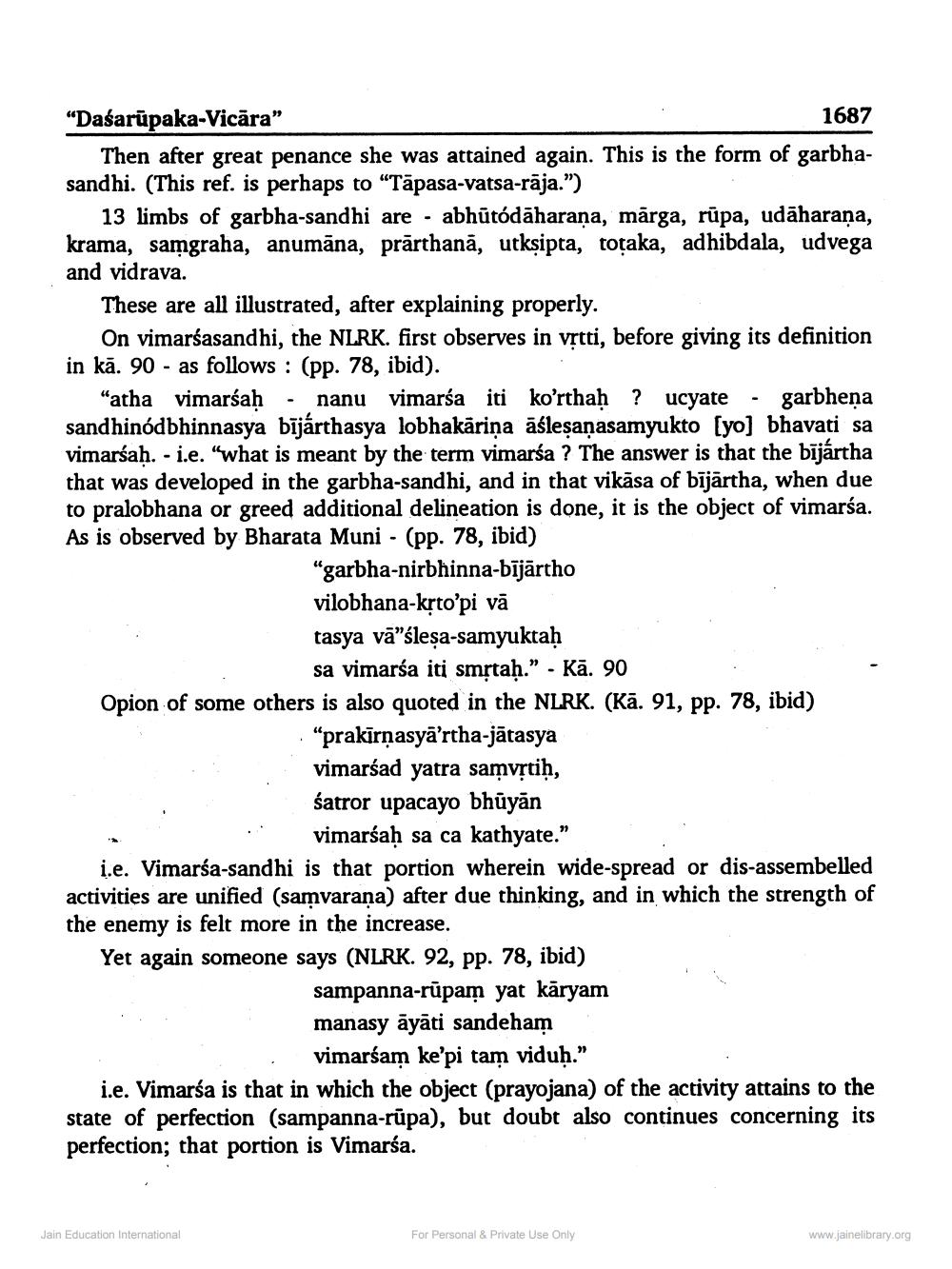________________
“Dasarūpaka-Vicāra"
1687 Then after great penance she was attained again. This is the form of garbhasandhi. (This ref. is perhaps to "Tāpasa-vatsa-rāja.”)
13 limbs of garbha-sandhi are . abhūtódāharana, mārga, rūpa, udāharana, krama, samgraha, anumāna, prarthanā, utksipta, toțaka, adhibdala, udvega and vidrava.
These are all illustrated, after explaining properly.
On vimarśasandhi, the NLRK. first observes in vrtti, before giving its definition in kā. 90 - as follows : (pp. 78, ibid).
“atha vimarśaḥ · nanu vimarśa iti ko'rthaḥ ? ucyate - garbhena sandhinodbhinnasya bījárthasya lobhakāriņa āślesanasamyukto (yo) bhavati sa vimarśaḥ. - i.e. "what is meant by the term vimarśa ? The answer is that the bijártha that was developed in the garbha-sandhi, and in that vikāsa of bījārtha, when due to pralobhana or greed additional delineation is done, it is the object of vimarsa. As is observed by Bharata Muni - (pp. 78, ibid)
"garbha-nirbhinna-bījārtho vilobhana-krto’pi vā tasya vā”śleșa-samyuktaḥ
sa vimarśa iti smstaḥ." - Kā. 90 Opion of some others is also quoted in the NLRK. (Kā. 91, pp. 78, ibid)
, “prakīrṇasyā’rtha-jātasya
vimarśad yatra samvṛtiḥ, śatror upacayo bhūyān
vimarśaḥ sa ca kathyate." i.e. Vimarsa-sandhi is that portion wherein wide-spread or dis-assembelled activities are unified (samvarana) after due thinking, and in which the strength of the enemy is felt more in the increase. Yet again someone says (NLRK. 92, pp. 78, ibid)
sampanna-rūpam yat kāryam manasy āyāti sandeham
vimarśam ke’pi tam viduḥ." i.e. Vimarśa is that in which the object (prayojana) of the activity attains to the state of perfection (sampanna-rupa), but doubt also continues concerning its perfection; that portion is Vimarsa.
Jain Education International
For Personal & Private Use Only
www.jainelibrary.org




